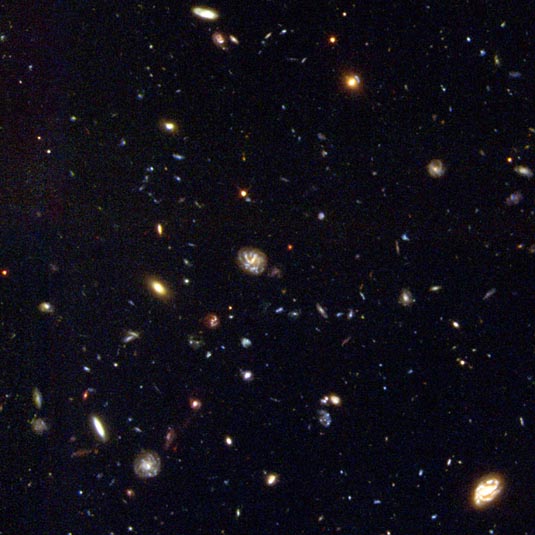
for Hubble's Latest Deep-View
Description: Galaxy field
Position (J2000): RA 22h 32m 56.22s Dec -60° 33' 02.69"
Constellation: Tucana
Image Credit: R. Williams (STScI), the HDF-S Team, and NASA
ABOUT THIS IMAGE:
Turning its penetrating vision toward southern skies, the Hubble telescope has peered down a 12- billion-light-year-long corridor loaded with a dazzling assortment of thousands of never-before-seen galaxies. The observation, called the Hubble Deep Field South, doubles the number of far-flung galaxies available to astronomers for deciphering the history of the universe.
This new "far-look" complements the original Hubble "deep field" taken in late 1995, when Hubble was aimed at a small patch of space near the Big Dipper. The new region is in the constellation Tucana, near the south celestial pole.
This picture is the culmination of a 10-day-long observation called the Hubble Deep Field South (HDF-S) which was carried out in October 1998 by a team of astronomers at the Space Telescope Science Institute (STScI) and the Goddard Space Flight Center.
Hubble's sharp vision allows astronomers to sort galaxy shapes. The image is dominated by beautiful pinwheel-shaped disk galaxies, which are like our Milky Way. The picture also contains a variety of peculiar-shaped galaxies that are in collision with companion galaxies. Elliptical galaxies appear as reddish blobs. A sprinkling of foreground stars (belonging to our Milky Way) appear as bright points with "diffraction spikes" an artifact of all telescope optics.
The colors in the pictures are a natural representation of the galaxies' stellar populations. Blue corresponds to young hot stars. Red may indicate older stars, starlight scattered by dust, or very distant starlight that has been stretched to redder wavelengths by the universe's expansion.
Follow-up
observations with large ground-based telescopes in the southern hemisphere
will establish the distances to the galaxies. This will help astronomers
understand the history of the universe because the galaxies represent
the universe at different epochs, depending on their distances.